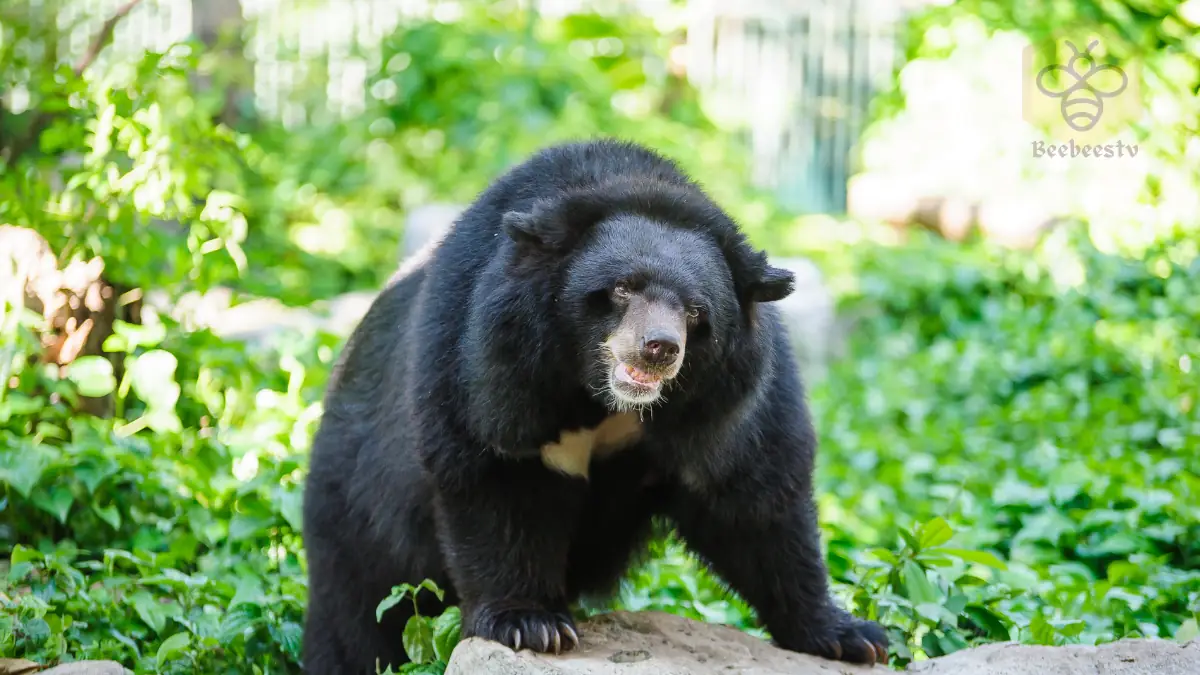Asiatic Black Bear: The Moon Bear of the Wild
Asiatic Black Bear
Introduction
The Asiatic Black Bear, often called the “Moon Bear” due to its crescent-shaped white mark on its chest, is a fascinating species in Asia. Known for its adaptability and intelligence, this bear plays a significant role in the ecosystems it inhabits. However, like many wildlife species, it faces threats from habitat loss and human activities.
Scientific Overview
Scientific Name
Ursus thibetanus
Common Name
Asiatic Black Bear, Moon Bear, or Himalayan Black Bear
Scientific Classification
Types of Asiatic Black Bears
There are no officially recognized subspecies, but populations may vary slightly based on their geographic range, such as the Himalayan Black Bear.
Habitat and Distribution
Asiatic Black Bears inhabit forests ranging from subtropical lowlands to high-altitude temperate regions. Their range includes:
- The Himalayas
- Northeastern India
- China
- Korea
- Japan
- Southeast Asia
They prefer areas with dense vegetation, providing cover and abundant food sources.
Physical Characteristics
Size and Weight
- Height: 4-6 feet (120-180 cm) when standing on hind legs.
- Weight: 220-440 pounds (100-200 kg), with males being larger than females.
Appearance
- Black fur with a distinctive white or cream crescent on the chest.
- Rounded ears and a stout body.
- Strong limbs and sharp claws suited for climbing trees.
Diet and Feeding Habits
The Asiatic Black Bear is omnivorous and highly adaptable in its diet, consuming:
- Fruits and berries.
- Nuts and seeds.
- Insects like termites and ants.
- Small mammals and carrion.
They are skilled climbers and often forage in trees for food.
Predators and Threats
Asiatic Black Bears have few natural predators, such as tigers and leopards. However, human activities pose the greatest threats:
- Deforestation: Loss of habitat due to logging and agriculture.
- Illegal Wildlife Trade: Exploitation for bear bile, used in traditional medicine.
- Human-Wildlife Conflict: Encounters with humans due to habitat encroachment.
Reproduction, Cubs, and Lifespan
Reproduction
- Breeding Season: May to July.
- Gestation Period: About 6-8 months, including delayed implantation.
Cubs
- Litter Size: 1-3 cubs.
- Cubs stay with their mothers for up to two years, learning survival skills.
Lifespan
They live about 25-30 years in the wild and longer in captivity.
Population and Conservation Status
The Asiatic Black Bear is listed as Vulnerable on the IUCN Red List. Its population is declining due to:
- Habitat destruction.
- Poaching for body parts and traditional medicine.
- Retaliatory killings.
Conservation efforts include:
- Establishing protected areas.
- Anti-poaching measures.
- Raising awareness about the ecological importance of the species.
Behavior and Lifestyle
Nocturnal Habits
Asiatic Black Bears are primarily nocturnal but may be active during the day in undisturbed areas.
Social Structure
They are solitary, except during mating or when mothers are raising cubs.
Hibernation
In colder regions, they hibernate during winter, often in tree hollows or caves.
Ecological Role
As seed dispersers and scavengers, The Moon Bears contribute to forest health and biodiversity. Their foraging behavior helps in nutrient recycling within their habitats.
FAQs About Asiatic Black Bears
- Why is the Asiatic Black Bear called the Moon Bear?
The name “Moon Bear” comes from the crescent-shaped white marking on its chest, resembling a moon. - Do Asiatic Black Bears attack humans?
While generally shy, they can become aggressive if threatened or cornered, particularly mothers with cubs. - What do Asiatic Black Bears eat?
They are omnivores, eating fruits, nuts, insects, and small animals, adapting their diet to seasonal availability. - Where can I see an Asiatic Black Bear in the wild?
They are found in forests across Asia, including the Himalayas, China, and Japan, though spotting one in the wild is rare due to their elusive nature. - How can we help conserve Moon Bears?
Supporting wildlife conservation organizations, reducing deforestation, and raising awareness about the illegal wildlife trade are crucial steps.
Conclusion
The Asiatic Black Bear, with its striking appearance and vital ecological role, is a species worth protecting. As habitat destruction and illegal wildlife trade threaten its survival, conservation efforts become even more critical. By valuing our planet’s unique biodiversity and taking steps to protect it, we can ensure that the Moon Bear continues to thrive in its natural habitat.
